Performance
In terms of performance, the E-350 is hardly a new product and there is not much point in running a bunch of comprehensive tests. It’s faster than current generation Atoms, but bear in mind that Cedar Trail should be out any day now. Even AMD launched the updated E-450 a couple of months back, but there is a catch – you can’t actually buy any.
Cedar Trail, Intel’s much touted next generation 32nm Atom was supposed to launch in Q3 and retailers have been listing Intel’s first Cedar Trail boards for weeks, yet they are nowhere to be found. To some extent the same applies to E-450 products. They are available in a handful of netbooks, but not in micro-ITX format and the vast majority of Brazos products are still based on the good old E-350. Besides, the E-450 offers only a minor performance boost, so you really won’t be missing out on anything if you go for the E-350 instead.
There is no clear or simple explanation for this, although Intel faced some driver issues with Cedar Trail graphics, but we reckon it also has something to do with the sharp decline in netbook shipments and there is a chance both AMD and Intel are affraid of being stuck with inventories of old chips, so we wouldn’t hold our breath waiting for their successors.
Let’s kick off with the customary CPU-Z, GPU-Z and 3dmark06 screens.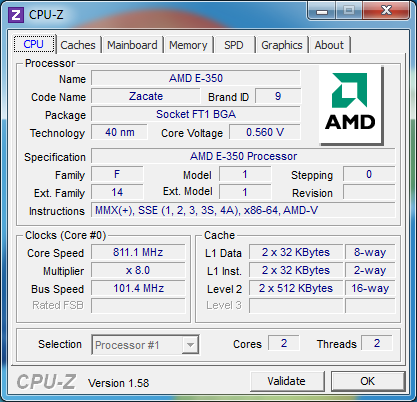
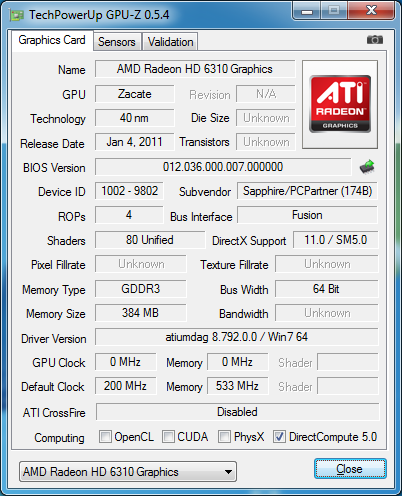
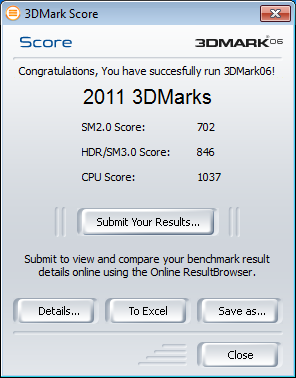
Sadly, we couldn’t get our hands on any E-450 or Cedar Trail gear, so it is really hard to say how the E-350 stacks up against these upcoming platforms. We can only compare to it to Intel’s Atom D525 with ION2 graphics and another E-350 system from Zotac.
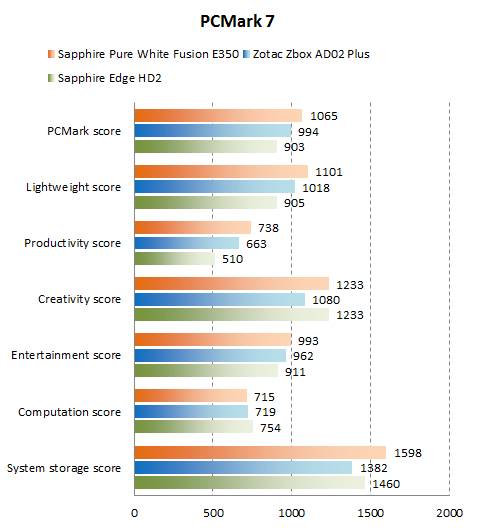
In most PCmark7 benches, the E-350 easily outpaces the Atom, apart from the creativity score, which favors the multithreded Atom. 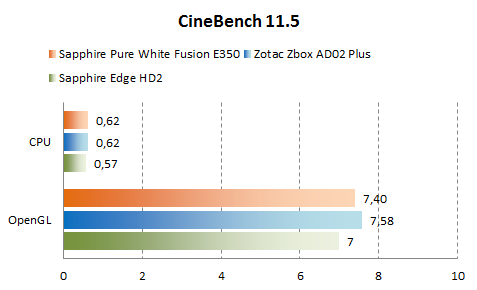
To some extent this also applies to CineBench tests, the Atom does rather well, but only on account of HT support.
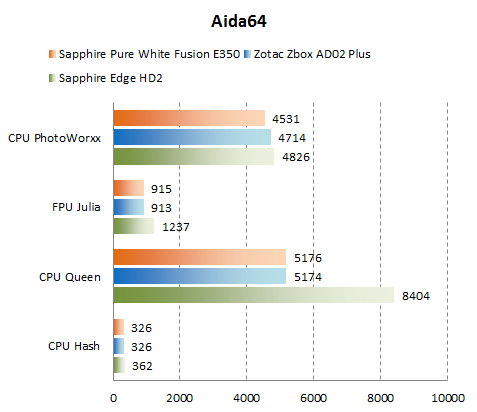
In Aida64, the Atom comes out on top on account of its superior FPU, HT and somewhat higher clock (1.86GHz vs. 1.6GHz)
The results might seem like a draw, but in real life applications Brazos will outperform any Atom system, regardless of clock, or the aid of Nvidia graphics. The E-350 simply delivers superior performance where it really counts when it comes to HTPCs. In graphics, browsing and even power consumption, it is somewhat superior to even the fastest Atom chips. Intel on the other hand has a clear advantage in heavily threaded applications and transcoding, which is really not your average HTPC workload, unless you plan to use iTunes on a daily basis.



